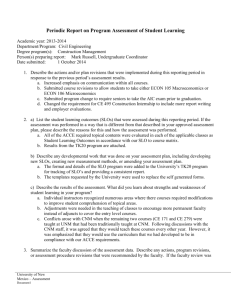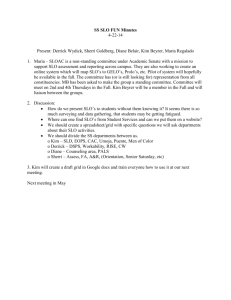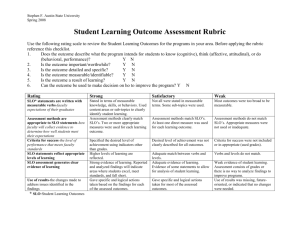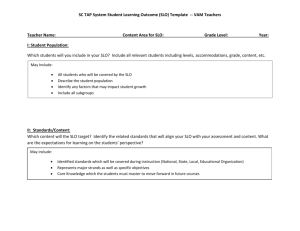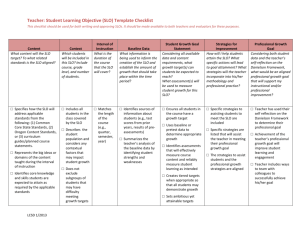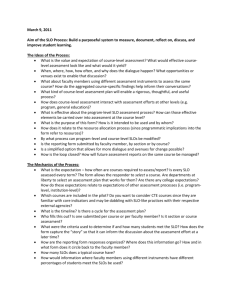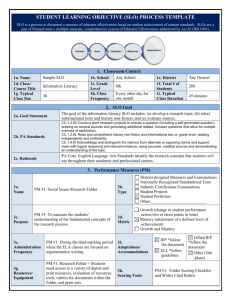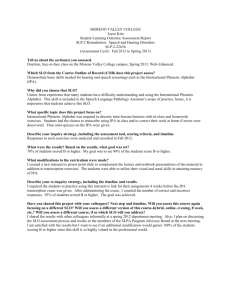2011-12 Program Assessment Update Department & Program
advertisement
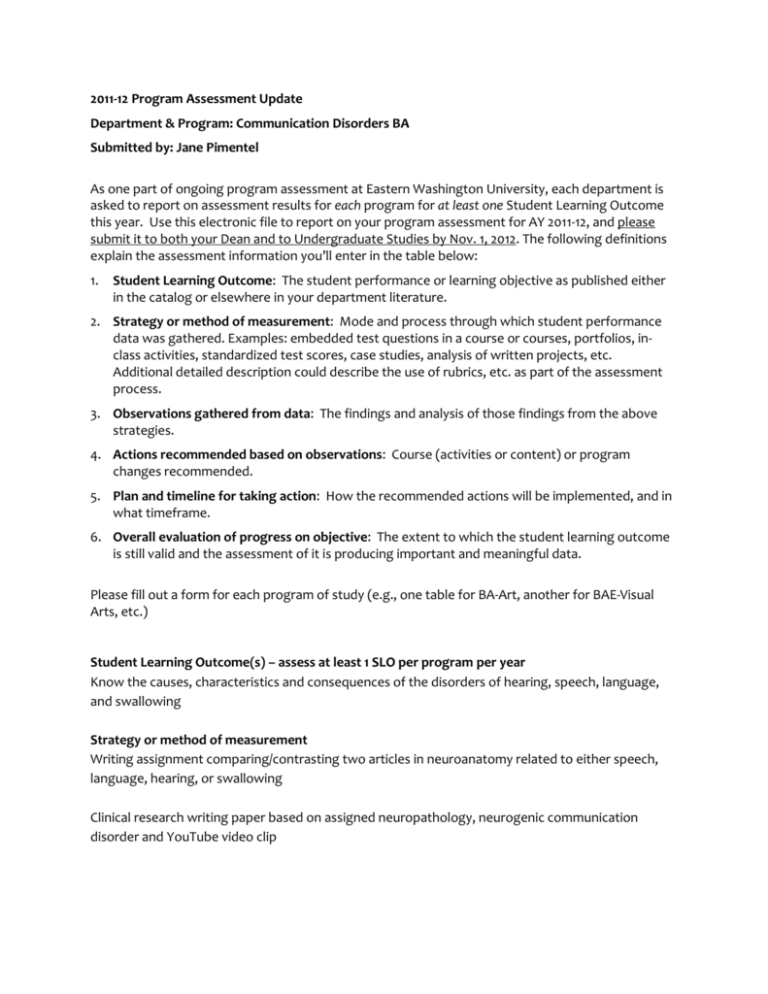
2011-12 Program Assessment Update Department & Program: Communication Disorders BA Submitted by: Jane Pimentel As one part of ongoing program assessment at Eastern Washington University, each department is asked to report on assessment results for each program for at least one Student Learning Outcome this year. Use this electronic file to report on your program assessment for AY 2011-12, and please submit it to both your Dean and to Undergraduate Studies by Nov. 1, 2012. The following definitions explain the assessment information you’ll enter in the table below: 1. Student Learning Outcome: The student performance or learning objective as published either in the catalog or elsewhere in your department literature. 2. Strategy or method of measurement: Mode and process through which student performance data was gathered. Examples: embedded test questions in a course or courses, portfolios, inclass activities, standardized test scores, case studies, analysis of written projects, etc. Additional detailed description could describe the use of rubrics, etc. as part of the assessment process. 3. Observations gathered from data: The findings and analysis of those findings from the above strategies. 4. Actions recommended based on observations: Course (activities or content) or program changes recommended. 5. Plan and timeline for taking action: How the recommended actions will be implemented, and in what timeframe. 6. Overall evaluation of progress on objective: The extent to which the student learning outcome is still valid and the assessment of it is producing important and meaningful data. Please fill out a form for each program of study (e.g., one table for BA-Art, another for BAE-Visual Arts, etc.) Student Learning Outcome(s) – assess at least 1 SLO per program per year Know the causes, characteristics and consequences of the disorders of hearing, speech, language, and swallowing Strategy or method of measurement Writing assignment comparing/contrasting two articles in neuroanatomy related to either speech, language, hearing, or swallowing Clinical research writing paper based on assigned neuropathology, neurogenic communication disorder and YouTube video clip Observations gathered from data The writing assignments occurred for Seniors across their final year in the major. A. Students averaged 89% on this writing assignment (fall) B. Students averaged 96% on this writing assignment (spring) A progression of knowledge specific to communication disorders second to neurological damage is evident by the students. When students do not meet criteria (<74%); they met with the instructor/TA’s and an individualized assistance plan was developed that they then had to meet (e.g., meet with study skills center to rewrite paper). Actions recommended based on observations The SLO as stated here is too broad and hard to measure. A number of measurements across a number of courses address this SLO; primarily exams but also presentations, papers and projects. The SLO’s for the undergraduates should be rewritten to align with Knowledge and Skill Competencies (accreditation) that are expected to be addressed in the undergraduate curriculum (e.g., “demonstrate knowledge of the neurological basis of communication disorders”). Plan and timetable for taking action Plan: review current undergraduate major program SLO and align and/or replace with SLO’s consistent with required competencies Timeline: develop SLO’s and means to measure outcomes during spring 2013 to be implement AY 2013-2014 Overall evaluation of progress on objective This SLO is integral to our program but encompasses too much. The measures chosen here do assess undergraduate students ability to convey this knowledge specific to neurological disorders in written form



